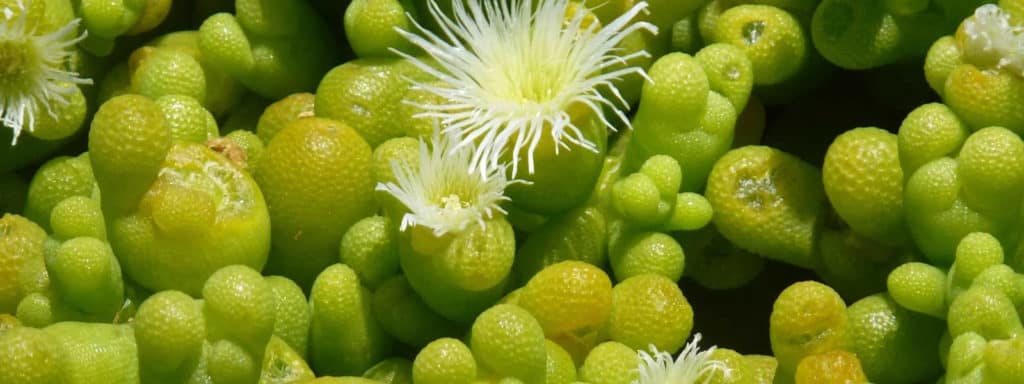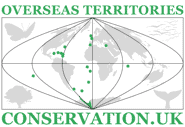Unique Biodiversity

Unique Biodiversity
A brief overview of the natural history of the UK Overseas Territories and Crown Dependencies
The UKOTs and CDs boast some of the world’s most delicate and complex ecosystems and habitats. Collectively they hold a truly staggering amount of biodiversity, which provides many goods and services, e.g. fishing, tourism, storm protection, renewable energy supply.
The total land area of the UKOTs and CDs covers approximately 17, 084 km2, if we include British Antarctic Territory, the total becomes 1, 727, 267km2. With the territories, the UK’s exclusive economic zone (EEZ) is the fifth largest in the world, at 6,805,586 km2.
Some facts and figures about the terrestrial environment:
- About 90 endemic species (i.e. those which occur nowhere else) occur in mainland Britain, compared with 3300 known so far in the UKOTs – and surveys are far from complete. Therefore, it has been said that they have 94% of known endemic species for which the UK is responsible under international conventions.
- About 75% of those formally reviewed are globally threatened, and most of those not yet reviewed are likely to be similarly threatened.
- Far less is know about the unique invertebrate fauna, although in recent years, intensive efforts have been made by some to study these. St Helena has 460 endemic invertebrate species many are critically endangered. Montserrat has over 1,200 invertebrate species, of which 718 species are beetles and 81 species are single-island endemics.
- At least 180 endemic plant species are found in the UKOTs. St Helena has 49 including: olive, rosewood and ebony trees which are some of the rarest. UKOTs Online Herbarium was established by Royal Botanic Gardens, Kew in partnership with organisations in the UKOTs.
- Gibraltar is home to a variety of endemic plant species as well as the Barbary macaque, the only wild monkey in Europe.
- There are 23 endemic species of reptiles and amphibians found in the UKOTs. The Cayman Islands has 25 species of amphibians and reptiles, of these 17, some with multiple sub-species are endemic. Two sub-species of rock iguana, the Grand Cayman blue iguana and the Cayman Brac rock iguana, are subjects of a conservation programme.
- Terrestrial ecosystems include some of the rarest habitat types on the planet. Many are particularly biodiverse, including Montserrat’s Centre and Soufriere Hills, and Diana’s Peak on St Helena.
- The wetland system of the Turks and Caicos is considered to be the most pristine of all the 175 UK wetlands listed under the Ramsar Convention.
In the marine environment:
- The total reef area inside the UKOTs mapped by the Millennium Mapping Project is 4,712 km2, making the UK the twelfth largest reef nation of the World.
- UKOTs support more penguins than any other nation on earth, holding an estimated 36% of the world’s population of southern rockhopper penguins and 34% of gentoo penguins, as well as several other species.
- The waters around the Falkland Islands are nutrient rich attracting 25 species of marine mammals, including whales, porpoises and dolphins.
- South Georgia harbours vast colonies of seabirds, including five breedings species of penguins as well as providing breedings grounds for sea lions, elephant seals and holds 95% of the world’s Antarctic fur seal.
- The British Indian Ocean Territory contains the Great Chagos Bank, one of the world’s largest and richest atolls. Over 300 species of corals and ‘reef building relatives’ have been documented within its reefs.
- The green turtle Chelonia mydas nests in many of the Overseas Territories: Anguilla, Ascension Island, the BIOT, the British Virgin Islands, the Cayman Islands, Henderson Island (Pitcairn), Montserrat and the Turks and Caicos Islands.
- Alderney, part of the Baliwick of Guernsey, has one of the greatest tidal ranges in Europe at 20ft. Over 100 species of marine algae have been identified in its waters.
This biodiversity has served to underpin sustainable livelihoods the inhabited UKOTs for many generations. It provides also the potential to underpin continued and raised living standards and employment, especially through, for example, sustainable tourism. These natural assets need both safeguarding and management, in order to support the features that provide the attractions on which sustainable tourism can be based, and which also maintain the quality of life and culture of local communities.
The UK has responsibility for protecting the biodiversity found in the UK Overseas Territories and Crown Dependencies under several international commitments.
To become a supporter of nature conservation in the UKOTs and CDs you can donate today.
